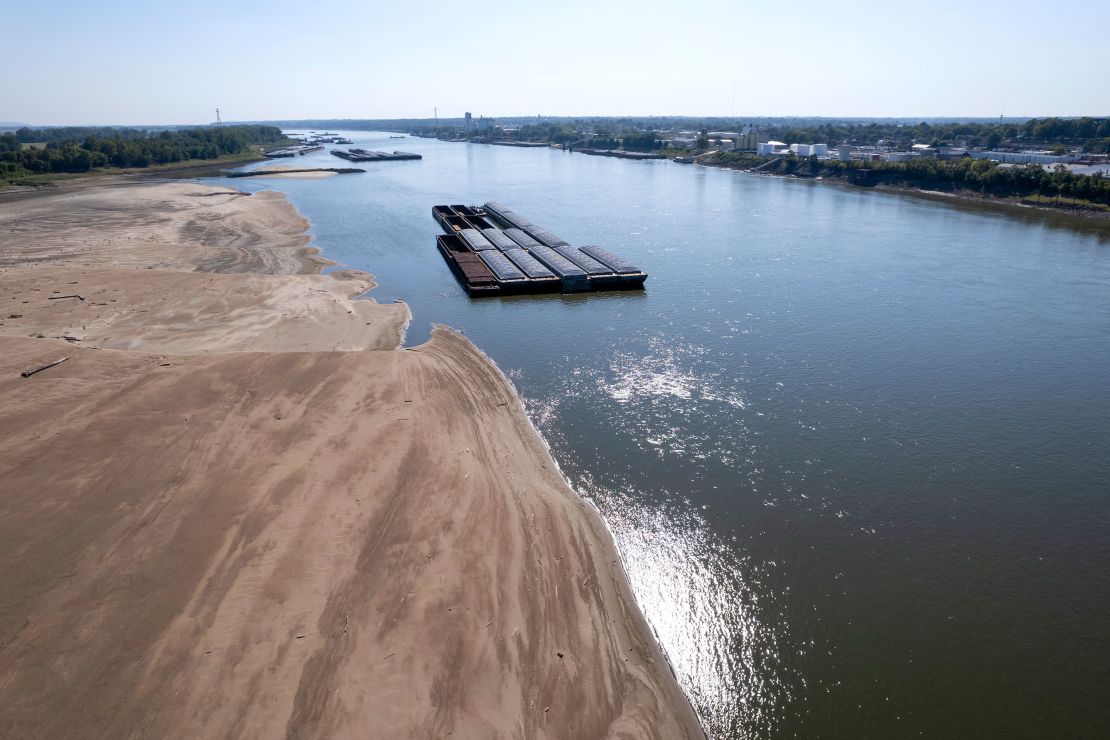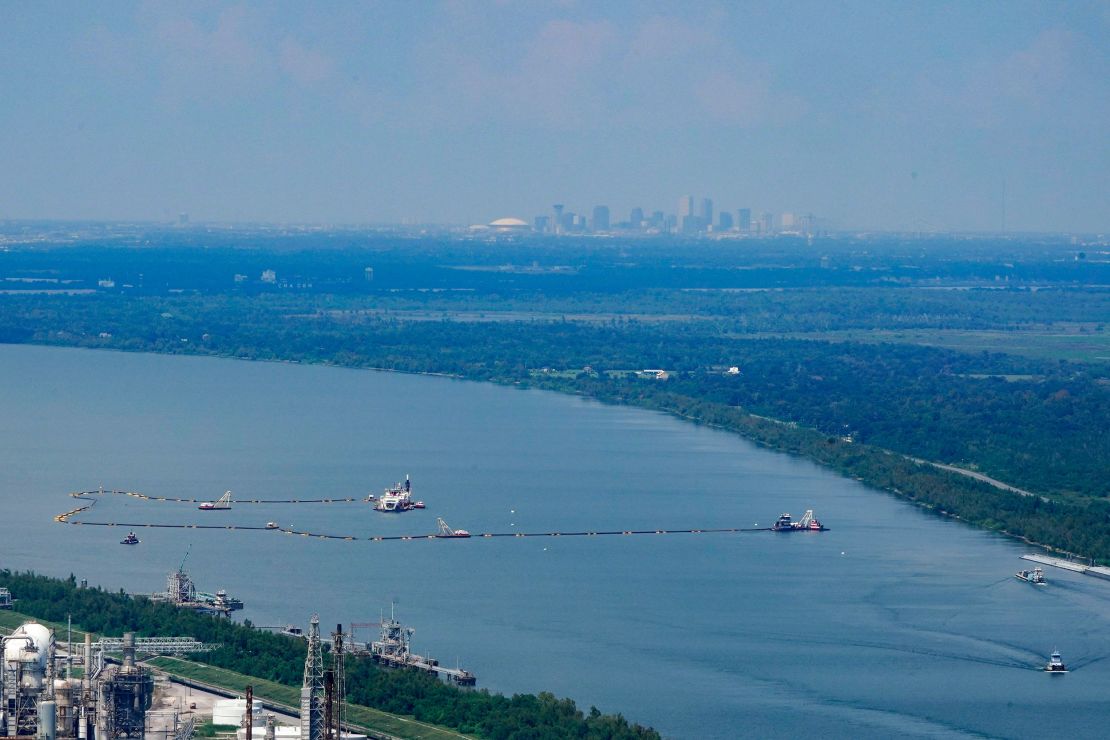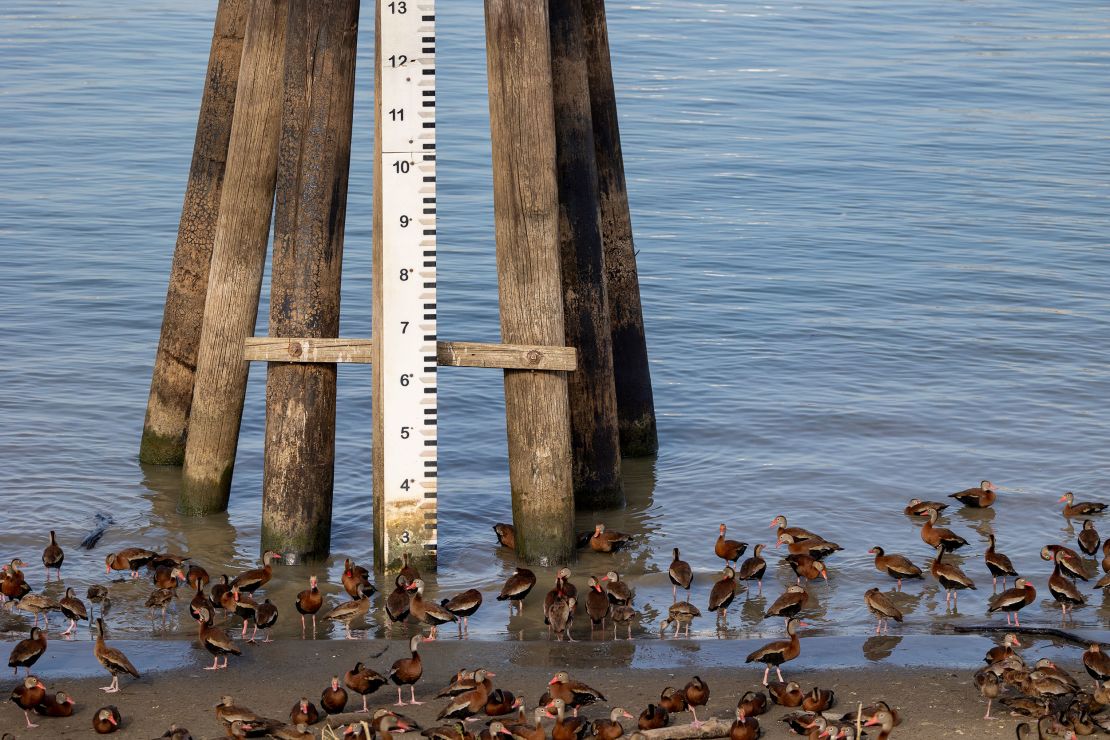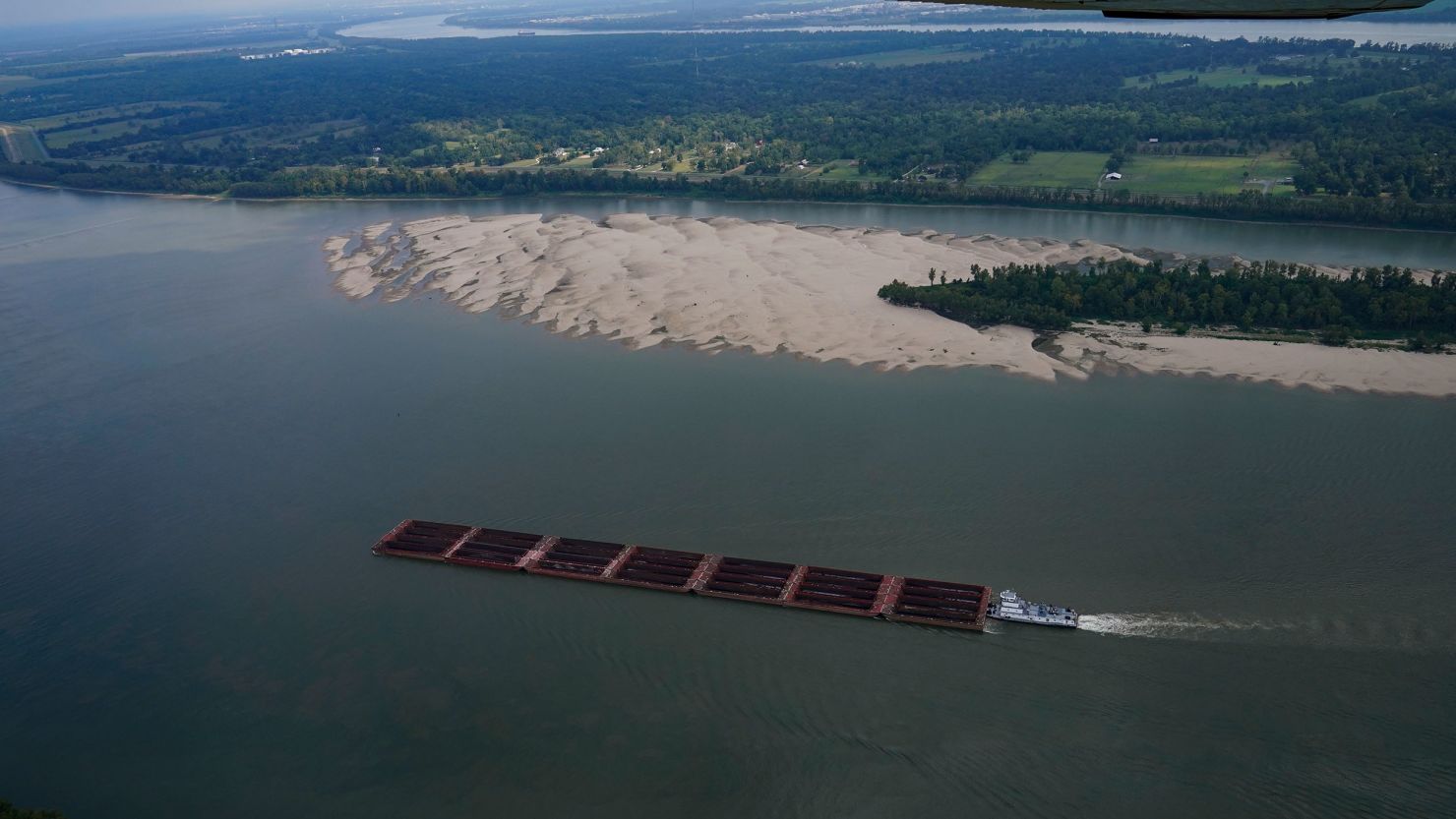Mississippi River water levels are plummeting to an all-time low this week at Memphis in the wake of a sweltering summer and ongoing drought – setting a record for the second consecutive year, new data shows.
The low levels have disrupted barge traffic and have allowed saltwater to move up the Mississippi River in Louisiana, threatening the drinking water for thousands of people.
The water level at Memphis fell to a record-low elevation of minus 11.5 feet on Wednesday afternoon, according to data from the National Weather Service. The preliminary record must be verified by the US Army Corp of Engineers, NWS Memphis noted on social media, and water levels could continue to drop in the coming days.
This year’s record is even lower than last. Near the end of last October, the Mississippi had dropped to minus 10.81 feet.
Several other records were set this weekend along the Mississippi and its major tributary, the Ohio River: Cairo, Illinois, was at a level of 4.5 feet, while New Madrid and Caruthersville in Missouri reached minus 6.4 feet and minus 2.6 feet, respectively.
Since at least mid-September, every water level gauge along a nearly 400-mile stretch of the Mississippi from the Ohio River to Jackson, Mississippi, has been at or below the low-water threshold, according data from the National Oceanic and Atmospheric Administration and US Geological Survey.
The low water has again sparked concerns for barge traffic during the critical harvest period, when staple Midwestern crops including soybeans, corn and wheat are transported down the river.

The historic lows are a product of an exceptional drought – the US drought monitor’s worst level – that is plaguing parts of the South and Midwest. It has spread across parts of Texas, Louisiana and Mississippi throughout the summer and was recently included as the 24th weather disaster so far this year that has cost at least $1 billion, according to NOAA.
Multiple days of heavy rain this week across the upper basin of the Mississippi River and lighter rain over the Ohio River Valley will cause the central and lower Mississippi River to rise “a few feet,” Jeff Graschel, a hydrologist with the Lower Mississippi River Forecast Center, told CNN.
“It certainly will not end the low water conditions that we have right now,” Graschel said. “What you need is several rain events like what we’re seeing this week over many weeks to really start to get the conditions to change on the lower part of the Mississippi River.”

Water from recent rain will take roughly a month to course through Midwest waterways into the Mississippi and then snake its way down to where the river meets the Gulf. Graschel said current projections show the river rising in Cairo, Illinois, by the end of October and in Memphis in early November.
Graschel estimated more substantial relief wouldn’t come until November and said “real recovery in high water levels really goes from December through about May.”
In Louisiana, the low flow has been allowing saltwater to creep up the Mississippi River this summer, threatening to infiltrate the water treatment systems for New Orleans and surrounding cities and towns.
The Army Corps of Engineers has been extending an underwater levee in the river to slow the advance of the saltwater, while parish officials upstream work to build pipeline systems that can draw freshwater into their intakes.
Army Corps officials previously said it would take 10 inches of rain over the entire Mississippi River Valley to push the saltwater back into the Gulf.

The rise from rains this week will be enough to push places like Memphis out of historic lows, but not enough to get the river’s flow back to average or to push the saltwater wedge all the way back into the Gulf of Mexico, hydrologists told CNN.
Rain from a separate storm system this week over southern Louisiana also won’t make much of a difference for river levels or the saltwater infecting water supplies there.
Better-than-forecast river flows in September slowed the saltwater’s upstream trek, state officials said last week, and the Army Corps now expects the saltwater to reach the city’s smaller water treatment intakes by late November. The large water treatment intakes around New Orleans – including the Carrollton intake, which serves most of the city – might not see saltwater inundation through the end of November, if at all.
CNN’s Mary Gilbert, Rachel Ramirez and Brandon Miller contributed to this report.





